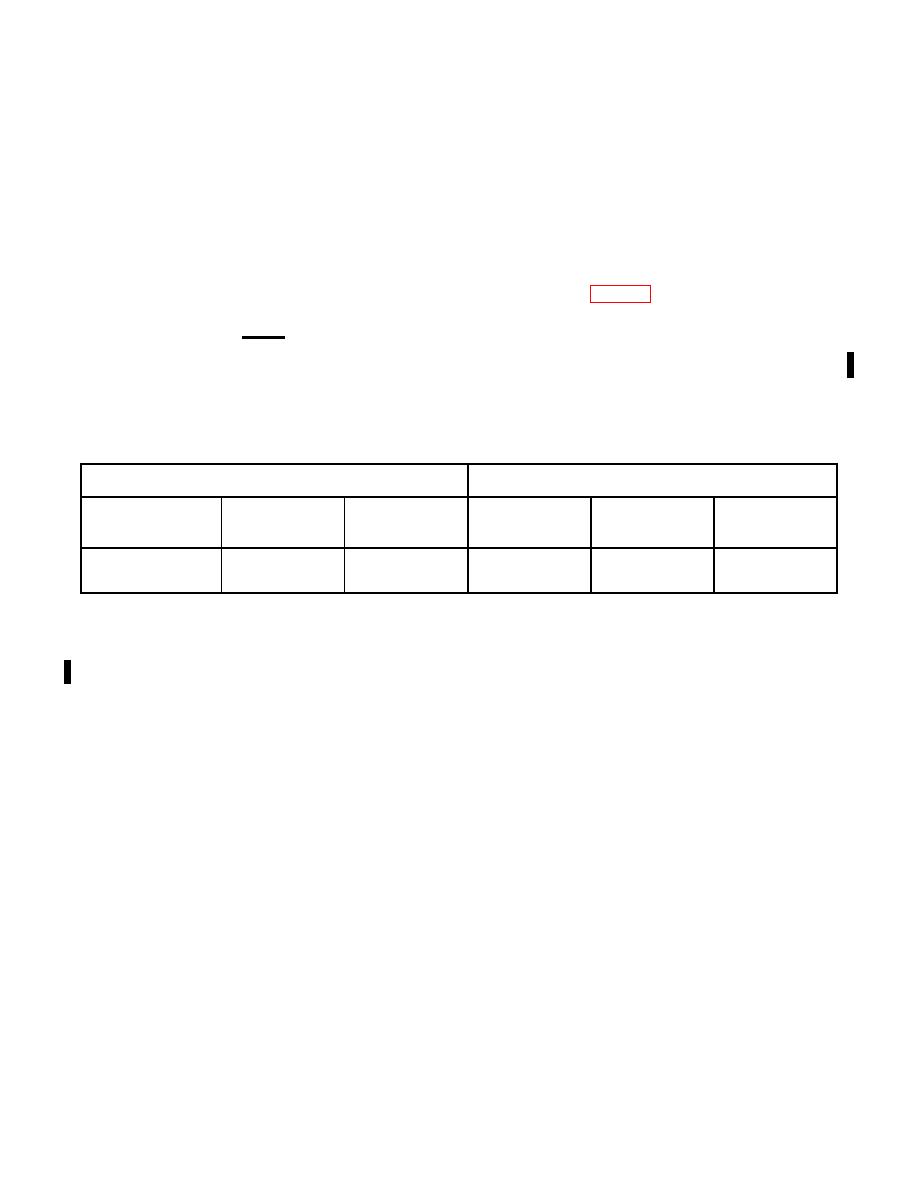
TM 9-1345-203-12
5-5. Data
amid stacking) to decrease shadows. When-
ever desirable, components of complete rounds
may be stored within the same FSU.
a. Field Storage Compatibility Groups.
(2) Field storage category for explosive materials.
(1) General. Storage compatibility groups are the pri-
Explosives and components, such as blasting caps, firing
mary groupings for segregating ammunition for storage in
devices, and safety fuzes are included in category E of field
the field. Safety procedures covering storage are based on
storage categories.
the following factors: Normally only one kind of material is
stored in a stack. Always keep initiating devices separated
b. Quantity-Distance for Field Storage Categories. Pro-
from other high explosives. Arrange items in stacks so as to
cedures specified in table 5-1 are to be used for guidance in
facilitate inventory and inspection.
field storage of military explosives. It must be emphasized
that any reduction of distances or increase in tonnages will
NOTE
increase the probability of loss of life and ammunition (see
Where camouflage is a consideration, stacks
also AR 385-64 and DA Pam 385-64).
may be stepped-in toward top (terraced or pyr-
Minimum distance in feet between
Gross tons
Stacks
Stacks
FSU
per FSU
unbarricaded
barricaded
unbarricaded
Categories
Less than 5
50
75
60
300
900
5-10 maximum
50
105
75
300
900
c. Permanent Installation Storage. For permanent stor-
b. Use hardstand of gravel and sand rather than excessive
dunnage.
age, standard quantity-distance classes and storage compati-
bility groups given in AR 385-64 and DA Pam 385-64.
c. Allow at least 6-inch clearance beneath pile for air cir-
culation.
5-6. Procedures
d. Dig suitable trenches around stacking area to prevent
a. When stacking, use heavy, well supported dunnage to
water from flowing under pile.
prevent stack from sinking, and to keep bottom tier off
ground.
Change 4

